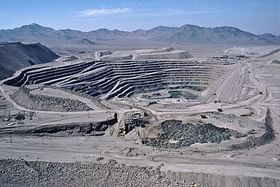Close on the heels of the discovery of lithium in Jammu and Kashmir, Rajasthan government officials and the Geological Survey of India (GSI) have informed that substantial reserves of ‘white gold’ have been identified in the Degana municipality of Nagaur district in Rajasthan.
The reserve found in Rajasthan is claimed to have significantly more lithium than the 5.9 million tonnes found in Salal-Haimana area of Reasi District of Jammu and Kashmir in February this year.
It is also being claimed that the quantity of lithium found in Rajasthan is capable of meeting 80 per cent of India’s total demand which can reduce the country’s dependency on China substantially.
India currently imports all the major components that go into the Li-ion cell manufacturing.
However, the recent GSI discovery has a long journey before it becomes commercially viable to mine lithium from the region and makes it to the production of lithium-ion batteries.
Finding Lithium
The United Nations Framework Classification (UNFC) for Fossil Energy and Mineral Resources (UNFC 2009) categorises resources on the basis of three fundamental criteria of degree of economic/commercial viability (E), field project status and feasibility (F) and level of geological knowledge (G).
The level of geological knowledge about a resource consists of four stages:
- G4 (Reconnaissance) stage: Quantities associated with a potential deposit, estimated primarily on indirect evidence.
- G3 (Prospecting) stage: Searching for a mineral deposit by narrowing down areas of promising enhanced mineral potential and aims to identify a deposit that will be the target for further exploration.
- G2 (general exploration): More studies are done to estimate the minerals’ shape, size, and grade and is aimed at deciding whether a Pre-feasibility Study and detailed exploration are warranted.
- G1 stage (Detailed Exploration): It is the final stage where characteristics of the deposit are established with a high degree of accuracy.
The recent discovery in India was classified as G3, implying that they are a product of a prospecting study where the calculation confidence is low. It needs to be backed by more proof to substantiate the quantum of minerals available at such sites.
Another major concern is that the lithium find in J&K, in inferred terms, is also comparatively small. According to the US Geological Survey, the world’s largest identified lithium resources are as follows: Bolivia, 21 million tons; Argentina, 20 million tons; Chile, 11 million tons; Australia, 7.9 million tons; China, 6.8 million tons.
Mining Issues
Lithium can be extracted in different ways, depending on the type of the deposit — generally either through solar evaporation of large brine pools, or from hard-rock extraction of the ore.
The ‘inferred’ reserves of 5.9 million tonne in J&K’s Reasi are mixed with other minerals into the rocks, which means more challenges in terms of cost and technology of processing.
“India is not habituated to extracting lithium and purifying it. It is mixed with rocks and other minerals. It would require breaking the rocks and removing volatile chemicals with evaporation and magnetic impurities with magnets besides other chemicals and processing. India has never done this, and neither has the best experience, tested technology to rely on, nor established industries for this,” said Sagar Mitra, Professor, Department of Energy Science and Engineering at the Indian Institute of Technology (IIT)-Bombay.
He also added that such a complex exercise could also prove costly.
“However, Australia has similar lithium reserves like J&K reserve, where lithium is mixed with bauxite. We may need technology transfers and tie-ups with the lithium metal extraction industry outside,” he said, adding that India must expedite the whole process, keeping in mind the rising demand for batteries and EVs.
It should be noted that Chile, which has world’s largest lithium reserves is keen to extend technical expertise in exploiting the newly established resource base.
Chile-based Sociedad Química y Minera de Chile (SQM), the world’s largest global lithium producer, has a venture in Australia to tap lithium in mineral form. This means the expertise of a Chilean company on lithium can be utilised for exploitation of the white alkali metal.
Environmental Concerns
The process of obtaining lithium from hard rock mines involves open-pit mining and roasting the ore using fossil fuels. Industry estimates indicate that for every tonne of lithium extracted, this process consumes 170 cubic meters of water and emits 15 tonnes of carbon dioxide.
As such any attempt to extract the mineral would should take care of local communities and offset the consequences of mining on local agriculture, animal husbandry, and tourism.
Ironically, the country had a long history of misplaced environmental activism, in part aided by the lack of pro-active disclosure and the governmental apathy.
The geostrategic importance of Li exploration and extraction makes it even more important that the exploration and extraction of resources should be based on sound and rigorous environmental impact assessment framework.
What lies ahead
Also referred to as “white gold”, lithium is a non-ferrous metal and is used in rechargeable batteries, which power not only laptops and mobile phones but also electric vehicles (EVs) — a crucial part of the world’s plan to tackle climate change.
It takes up to 10 years to build a greenfield lithium brine project and, in some cases, the process is becoming more difficult due to resistance from local communities.
While the GSI’s study has given an approximate idea of the total reserve, there is a long road ahead.India needs additional infrastructure, technological expertise, and experience in processing and refining mined lithium to make it ready to be used in batteries.
For this to happen, energy, capital and the government’s hand-holding support is required.
Also, considering that exploration for lithium is still young in India and given that there have been quite a number of G4 and G3 finds, we may have more major lithium discoveries in India in the near future.
However, while the excitement on lithium discovery is understandable, unless the find is mined, the hype may soon turn into hyperbole.


